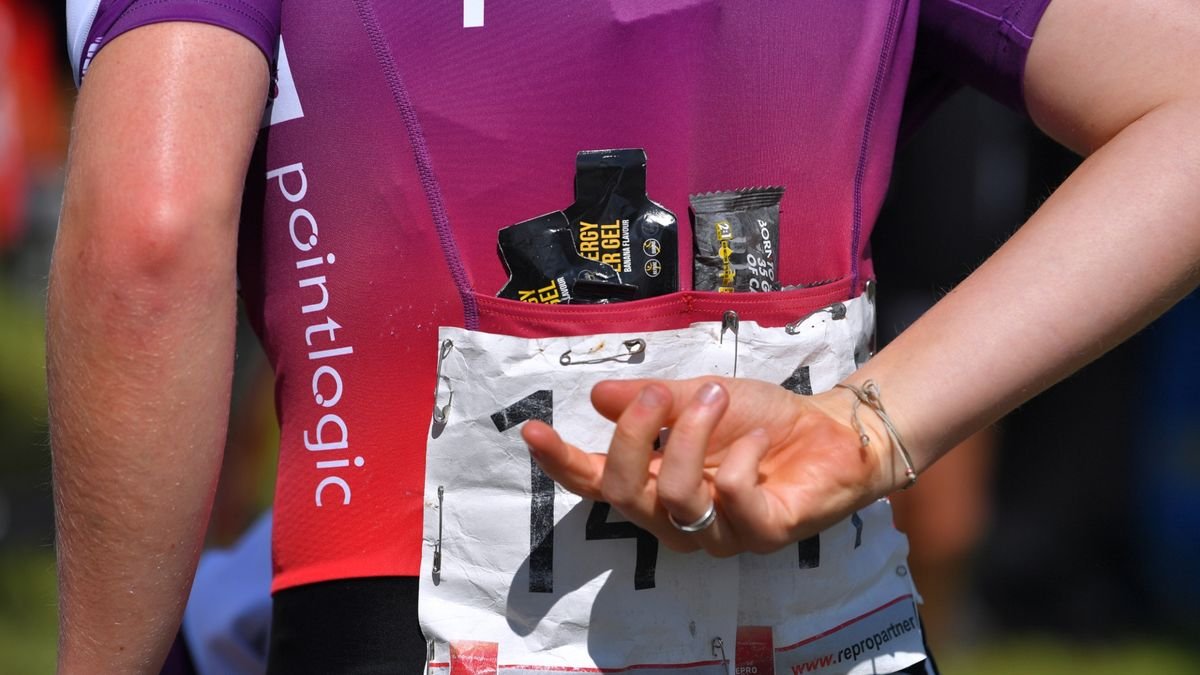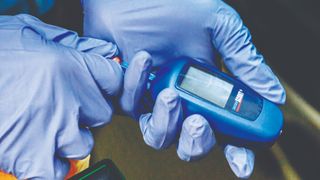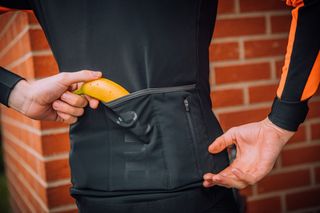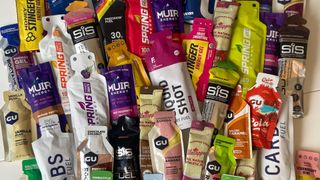
Professional bike racers are faster now than at any point in history. This is in part due to aerodynamic advancements but also because today’s riders are consuming better fuel—and a lot more of it. In the past, professional cyclists either didn’t understand how to fuel for endurance sports (i.e. the pre-and post-war brandy and roasted chicken era) or else were “fueling” with injectable substances (i.e. the oxygen vector doping era). As far as we know, we’ve moved past these eras and now find ourselves in a period defined by advancements in (legal) sports science.
Fuel like a pro
(Image credit: Getty Images)
When it comes to fueling, the latest and greatest is specially formulated sports nutrition that provides significant caloric value without creating digestive issues (a.k.a the dreaded “internal mechanical”). Further, there is scientific evidence that supports the process of adapting the gut to tolerate more calories, combined with monitoring systems to precisely match fuel intake with racing and training demands. These are the tools pro riders are using, and they seem to be working.
Broadly speaking, this focus on fuelling and recovery has been a very positive change for endurance sports. It means faster, more dynamic racing and happier, healthier athletes. Instead of riders starving themselves to hit a certain weight or riding long days without fuel, pros have learned that the right fuel equals speed.
But this can also create issues. Not every rider is mentally or physically capable of eating concentrated carbohydrates for hours on end. Top athletes consume upwards of 100 grams of carbs per hour, and processing high volumes of sugar can not only create stomach issues in the moment but also disrupt sleep and cause tooth decay and blood-sugar variability. Eating copious amounts of carbohydrates will especially cause problems for amateur riders, who have been known to mimic pros in any way they can because ‘if it works for Tadej, it’ll work for me,’ right?
Wrong.
Professional riders can fuel at impossibly high rates because they train at correspondingly high volumes. For amateurs fitting in their training around day jobs and families, eating hefty quantities of carbohydrates can create more problems than it solves.
A learning opportunity

(Image credit: Future)
I experienced some of these problems during my last cyclocross season. By focusing too heavily on fueling, I actually hindered my training. While I did succeed in teaching my body to process carbs during hard efforts, I often found myself missing the power I knew ought to be there. Further, I could feel blood sugar dips after riding. It turns out my training volume simply wasn’t high enough to warrant the focus I put on pre-ride carbohydrate intake.
The latest race content, interviews, features, reviews and expert buying guides, direct to your inbox!
This was corroborated at my annual physical, which included a blood sample. When the results came back, I received the following message from my doctor: “Your blood sugar and haemoglobin a1c have increased a bit since our last round of labs. Has your carbohydrate or sugar intake gone up in the last year?”
Yes, yes it had.
Once my race season was over and I was back to eating a more balanced diet, I felt better. It wasn’t that I was eating too much, per se; rather, I was eating too many simple carbohydrates. For amateur riders, eating a mix of whole grains, proteins and fats is a better nutrition strategy than trying to maximise glycogen stores at all times. Fortunately, I was able to make this correction before it turned into a more significant health issue.
An Expert’s Take

(Image credit: Future)
In order to delve deeper into these subjects, I spoke with sports nutritionist and cycling coach Kristen Arnold.
(The conversation has been edited for length and clarity)
Cycling Weekly: How has fueling changed within cycling over the last ten years?
Kristen Arnold: Culturally, athletes and coaches are starting to understand how important it is to make sure they are meeting their daily calorie needs. Where we used to spend a lot of time breaking down misconceptions about how much athletes need versus how much they are eating, we now can focus on other strategies for optimal performance.
CW: What downsides are there, if any, to high carbohydrate fueling?
KA: If and when athletes jump into high-carb fueling too quickly, especially during workouts, they are likely to experience symptoms such as nausea, bloating and indigestion. It’s important for athletes to work up to higher amounts of carbs per hour and make sure they are drinking enough fluid with the carbs.
CW: Does high-carb fuelling work better for some riders than others?
KA: High-carb fueling works better for riders who are riding over two hours and at a high intensity. Cyclists who are riding at a moderate intensity for under two hours do not necessarily need to fuel with more than 30-45g of carbs per hour. Any more carbs per hour than 45 g/hour for two hours or less could lead to gut distress as well as inhibit performance because the blood flow will go toward digestion and away from the limbs.
CW: Are there long-term health risks from eating increased amounts of carbohydrates, and how can these be mitigated? (e.g. higher blood sugar levels, tooth decay, gut microbiome issues, insulin control issues)
KA: While we don’t necessarily understand the long-term effects of high intake of simple sugars during exercise, there are a few things we know for sure related to its health impacts. Eating simple sugars leads to poor dental health and cavities. To improve dental health, consider brushing your teeth after rides to remove any excess sugars from gummies, sports drinks, etc. And shift to lower sugar fueling options for low- and moderate-intensity rides, such as bars and sandwiches.
CW: Outside of high-level amateur competition, does high-carb fueling provide benefits?
KA: Research shows that most athletes will not benefit from more than 90g of carbohydrates during exercise per hour. This is because these athletes are not exercising at a workload that requires this amount of fueling, and their gut is not trained to digest and metabolise carbohydrates above 90g per hour.
Conclusion

(Image credit: Tyler Boucher)
Arnold’s analysis provides some useful context for my own experiences, as well as some more background on how these techniques are used by professionals. The main takeaways seem to be that high-carb fueling can be impactful but mostly for riders pushing the limits of time and intensity.
An extremely tough endurance event, such as a Grand Tour, can be viewed as much an eating challenge as it is a bike race. Clearly, getting fuel requirements right is critical for performance. And if you make a mistake? Game over. For the rest of us, it’s important to pay attention to what you eat, but there’s no need to overdo it.

